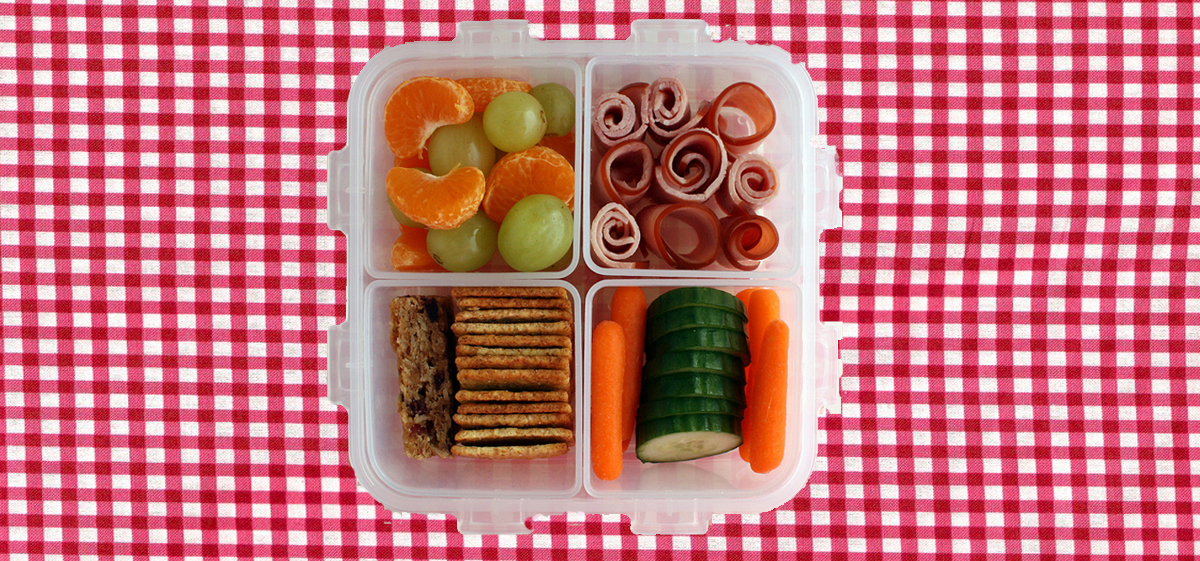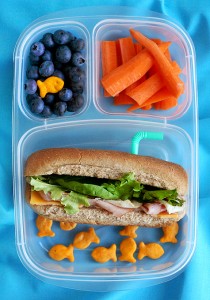Communiqué

The Low-Stress Guide to Packing School Lunch
< < Back to the-low-stress-guide-to-packing-school-lunchCaroline Kaufman, MS, RDN / PBS Parents
Does making school lunch stress you out? Of course it does! You have to pack a balanced, edible meal five days a week for a child who hates sweet potatoes one week, and adores them the next. But just because it can be stressful doesn’t mean it has to be. With these five simple strategies that range from planning in advance to cutting yourself some (much needed) slack, you’ll be able to banish school lunch burnout.
1. Get Preppy
If you do little bits of prep throughout the week, you’ll be ready to assemble lunch in no time. For example, when you buy a bag of baby carrots, have your kids divide them into individual portions, so they’re ready to pack when you need them, advises Angie Hasemann, MS, RDN, CSP, Weight Management Dietitian, Pediatric Endocrinology at University of Virginia Children’s Hospital. Yes – the kids. Hasemann says she sees “way too many teenagers who still have their parents pack their lunch. From a very young age, kids should be involved in this chore and taught this skill. It will pay off later.” (You can use your knife skills to cube the cheddar cheese, rinse and halve the grapes, and slice those cucumbers.)
2. Don’t Overthink It
To pack a balanced lunch, just pick something from each of the five food groups. “Adults often forget that kids don’t require their food to ‘go together’ like adults do. They’re more likely to be fine with (and enjoy) random ensembles,” says Hasemann.
Here are some sample foods you can mix and match from the different groups:
• Grains (1-2 servings): wheat tortillas, whole grain noodles, wheat bread, whole grain pretzels, and popcorn
• Vegetables (1 serving): baby carrots, edamame, avocado, cucumbers, pickle spears, and roasted sweet potato
• Fruit (1 serving): apples, grapes, strawberries, clementines, watermelon, kiwi, and applesauce
• Dairy (1 serving): milk, part-skim cheese stick, yogurt, cottage cheese, and cream cheese
• Protein (1 serving): turkey, grilled chicken, nut or seed butter, eggs, hummus, and veggie burgers
3. Give Leftovers a Second Chance
There’s nothing easier or more cost effective than re-using something you’ve already made. Meghan Girard, mother of three (ages 4, 2 ½ and 1), makes a double batch of macaroni and cheese for dinner, reheats leftovers the next morning with egg whites for added protein, spinach, and a little extra cheese, and packs it in an insulated thermos for her four year old.
Sara Haas, RDN, LDN, chef, and spokesperson for the Academy of Nutrition and Dietetics offers these creative ways to reinvent leftovers:
• Stuff stir-fry into lettuce wraps and pack low-sodium soy sauce for dipping
• Fold BBQ pork into burritos with low-fat cheese and pre-cut veggies
• Turn grilled chicken into grilled chicken fingers by cutting it into thin strips and sending along BBQ sauce or honey mustard for dipping
Try to find something you like about packing school lunches. For Girard, it’s all about the pumpkin bread. She loves to bake treats and quick breads with her kids, and when she includes a slice in her son’s lunch, he gets so excited he starts bouncing around the classroom, telling everyone his mom made it.
Maybe the fun is watching your kids pack their own lunches…nothing wrong with that. Set up bins in your refrigerator and pantry, recommends Hasemann, one for each food group. “Think a dairy bin with yogurt, cheese sticks, and individually packaged soy milk; a veggie bin; a fruit bin; a protein bin of small packages of nuts, individually portioned hummus, and lunch meat; and a grain bin of bread and pretzels. The kids can grab one food from each bin and pack their own lunch that way.”
5. Go Easy on Yourself
You don’t need to pack a perfect lunch – ever. Instead, do the best you can. Some days will be better than others. If you skipped a food group, you can serve it for breakfast or dinner, or just call it a day and try again tomorrow. In the bigger picture, your stress level has a greater impact on your child’s well being than a serving of dairy on Tuesday afternoon.


